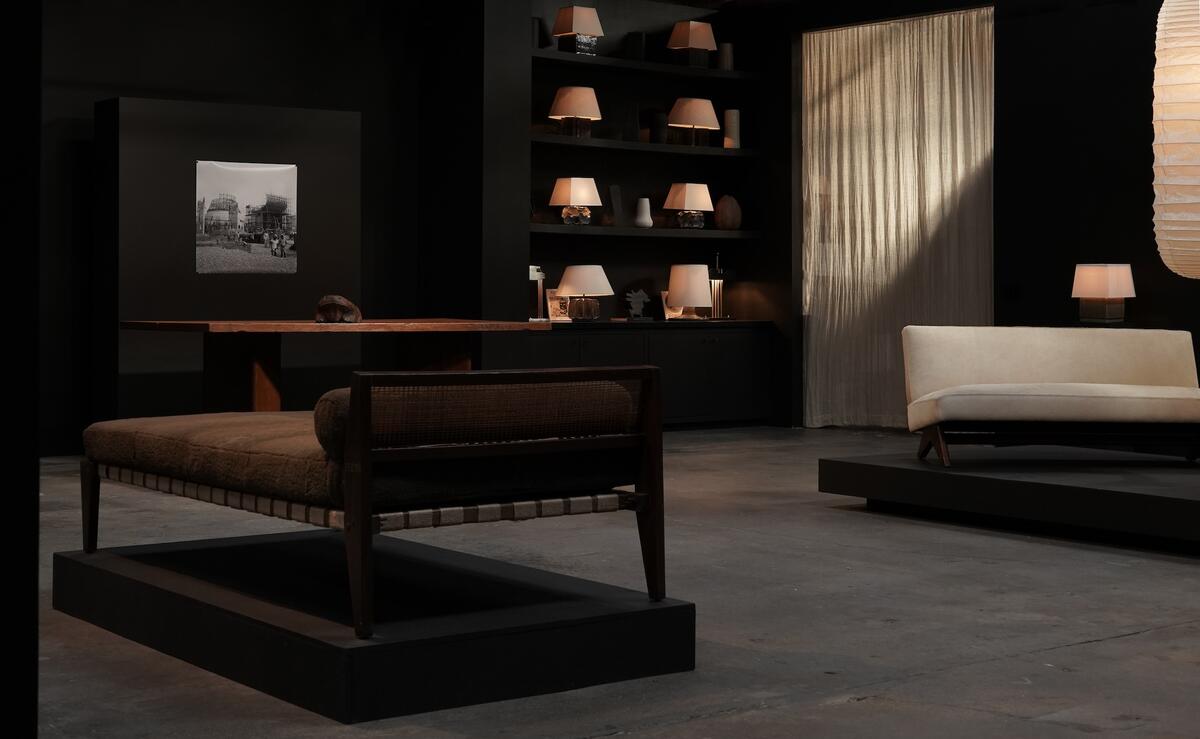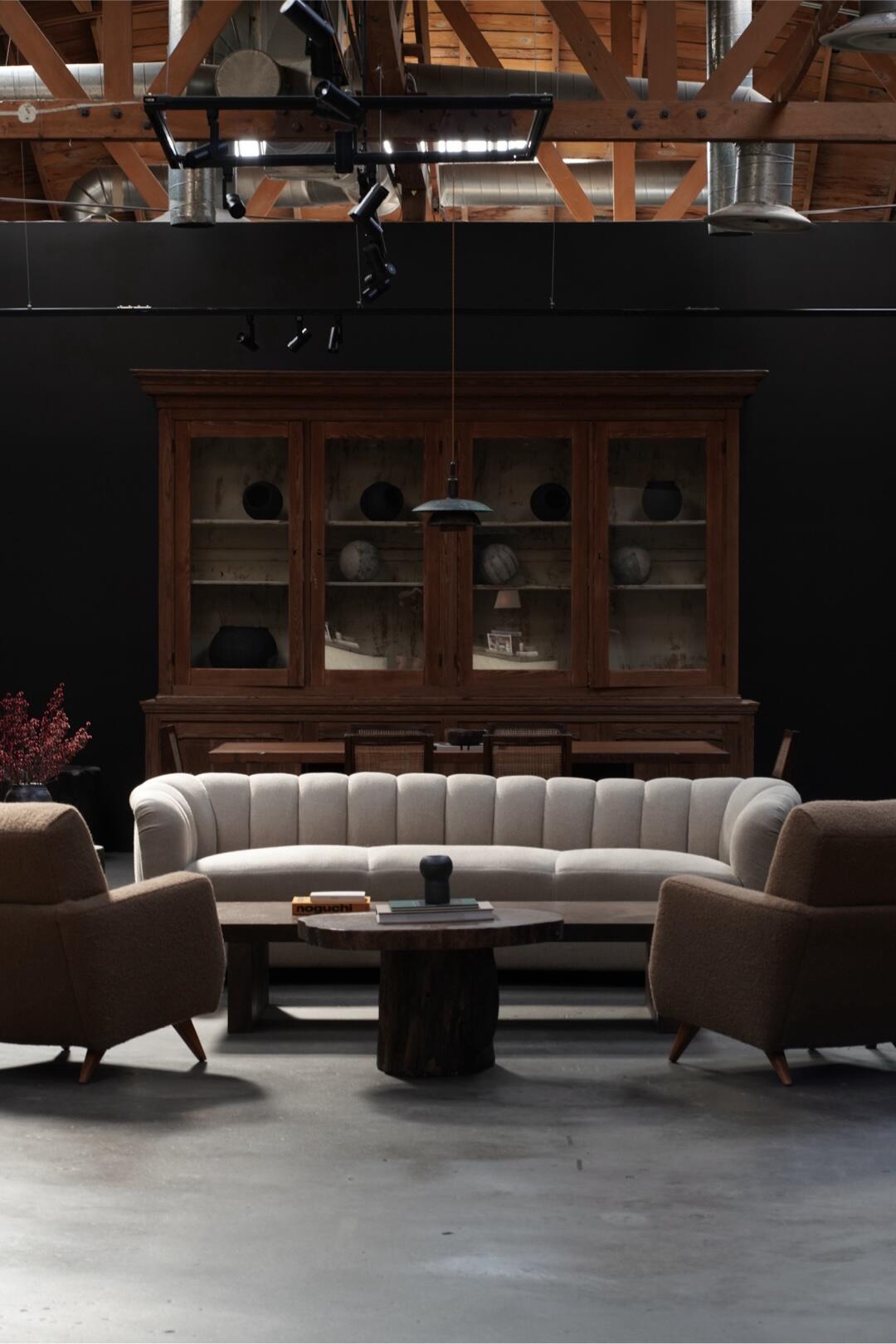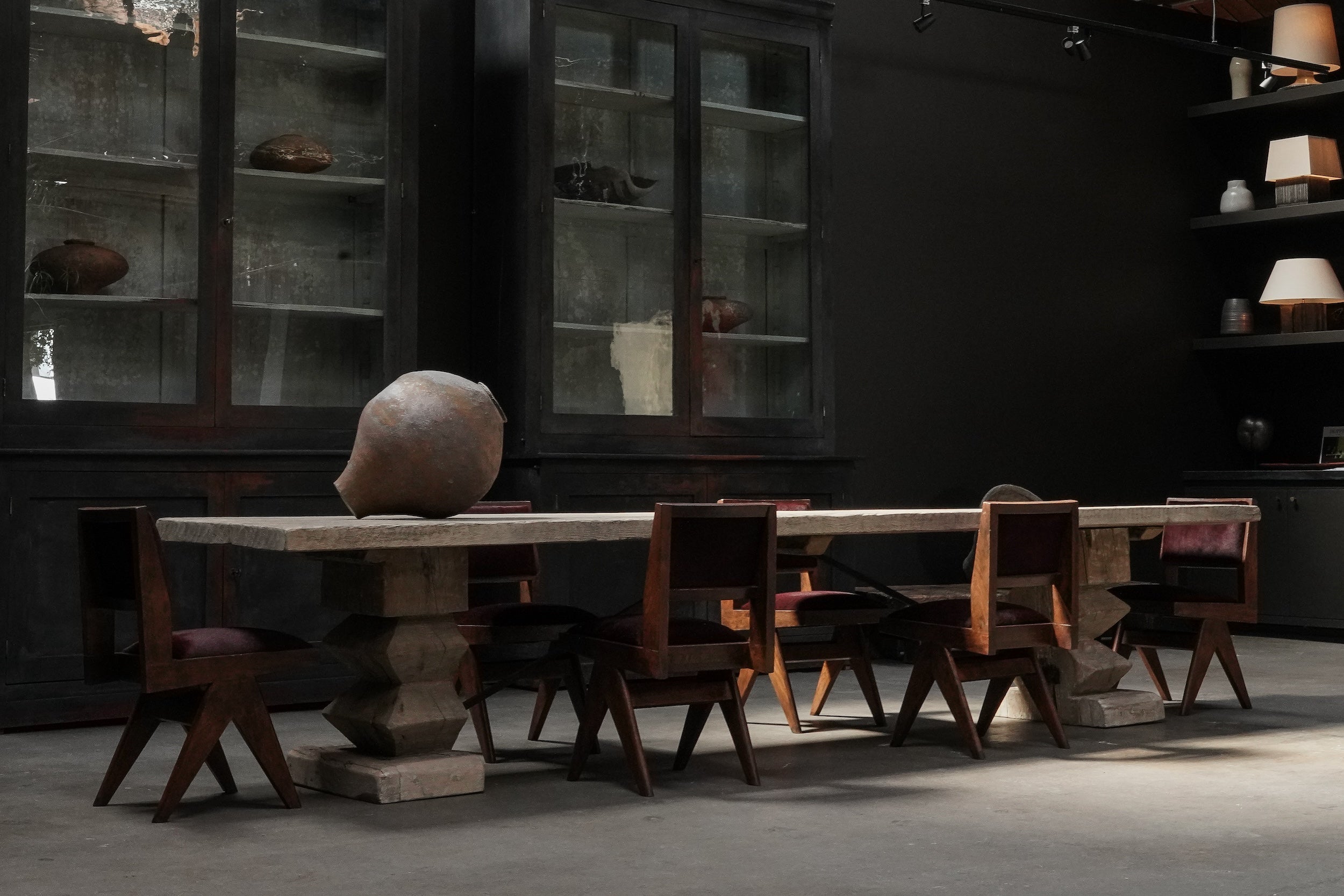In Business of Home’s series Shop Talk, we chat with owners of home furnishings stores across the country to hear about their hard-won lessons and challenges, big and small. This week, we spoke with Los Angeles–based interior designer and showroom owner Adriano Balestra.

Not many teenagers would have the chutzpah to move alone to the other side of the world, but there aren’t many young creatives like Balestra. He came to Los Angeles from his native Rome a decade ago for college, then founded his design firm, Studio Balestra, in 2018 at age 22. With an eye for antiques, he opened a showroom in 2022, and quickly expanded to a larger location the following year. There, an austere, black-walled gallery houses a mix of antiques from around the globe, with a special focus on Japanese pieces.
Balestra spoke with Business of Home about taking the first of several risks, the warm welcome he’s received from the L.A. design community, and where he plans to go next.
How did you get your start?
[Once] I decided to study abroad, I applied to a few different universities to study interior design. I always liked and appreciated design while I was growing up in Rome, and [wanted to pursue it after] I realized that was an actual job. I moved to Los Angeles after I graduated from high school. I met some wonderful designers while I was studying, including Clint Nicholas, who is one of my best friends. After I graduated, I worked for him for a couple of years. That’s how I started my interior design career.
After working for him, I decided I needed to do something different—to work for a firm that was not associated with a friendship. I went to work for Michael S. Smith, who has a very different aesthetic than I do, but I was very glad to learn. Then the pandemic started, and it gave me some time to reflect on what I enjoyed, as well as what my aesthetic was, and I decided to get more involved in curating antiques and midcentury modern pieces. I introduced myself via email to designers such as Atelier AM, Clements Design and Waldo [Fernandez], and I was proposing pieces to them that I was sourcing from all over the world, but I didn’t have them physically here in Los Angeles. As clients started purchasing from me and I was able to increase sales, everyone started recommending I have a presence here in Los Angeles. I found a small gallery on La Cienega Boulevard behind Lee Stanton—a space that used to be Jane Hallworth’s showroom and office—and I started [building] some inventory.
After that, the business picked up pretty fast. I was doing everything on my own: taking photos, styling, purchasing, and keeping up correspondence with clients. About a year and a half after I opened the first showroom, I decided to take a big step and upgrade to a larger space. The first was about 800 square feet; with the new one, I moved to the Hollywood area, on Lexington [Avenue near] Santa Monica Boulevard. That space is about 5,000 square feet.
What was it about Los Angeles that initially appealed to you?
The weather, first. I’ve been to New York many times and I studied there as well, but I never got a feeling of being home there. When I came to California, it somehow reminded me of Tuscany, where I used to spend my summers. Going to Napa or Malibu, there’s a feeling of home that I enjoyed. I felt safer here, in a way.
How would you describe the L.A. design scene, and your place in it?
I have to say it is very open-minded. I’m still relatively young—I’m 28—and my main fear growing up was that it [would be] very hard to prove my talents in Europe. Unless you have a very high degree and you’ve been in the business for 40 years, people don’t really take you seriously there. Here, the mentality is very different. People appreciate talent and taste, and they don’t really question their age too much. The design industry was pretty welcoming to me here in Los Angeles. Most of my clients are older than me, and it’s a really great feeling to be appreciated by designers who have been in the business for way longer than I have.
How would you describe the aesthetic of the store?
I’m very inspired by Japanese aesthetics and culture. The inspiration of my showroom started when I first started traveling to Japan, before I opened the business. The aesthetic is very moody. We focus on imperfections. We love pieces that show signs of age. Simplicity, as well—that is what we focus on. It’s evolving a bit in a more sophisticated way, but we’ve kept this philosophy for the showroom.
What is the experience of the store when people walk in? How is it laid out?
The showroom changes pretty much weekly. We rearrange the space whenever new pieces come in. [Our regular] clients let us know when they are coming in, but we’re not [just] open by appointments; we’re open to the public as well. We greet customers and start explaining our pieces if it’s the first time that they’re visiting us, and we assist with any questions they might have regarding the provenance of items. For some important design pieces, they may ask for documentation and more background. If we can assist with deliveries or trying the items in their space, we always offer and welcome that. Then it’s about following up with those requests. We have our own way of reaching out to clients biweekly, introducing new pieces to them via email, and then trying to get their attention and engaging them. With some clients, we text with them. Some are high profile, and they don’t like to come in [during normal hours], so we close the shop during weekends for them.

How do you go about sourcing? How have you made those relationships, and has that process changed over time?
Most of the relationships I’ve made in Japan were [forged] during the pandemic, so it was all remote, by doing a lot of research online. Some other relationships are related to connections I had in my family—for more important big-ticket items, like [Pierre] Jeanneret and Jean Prouvé pieces. Then, with time, I expanded my database through traveling and exploring new cities and mapping out what may be good areas to find new resources. Traveling helped a lot with helping me grow my network.
Would you say there is a certain era or style or piece that you specialize in, or that you’re known for?
Midcentury modern, for sure—and for the pieces from Japan, [we focus on] the Meiji era.
What is your own favorite item or category in the store?
Lately, I’m really enjoying the custom line of furniture pieces we are doing. It’s been a fun experience for me. When it comes to antiques, I love Pierre Jeanneret items.
What are the products that you can barely keep in stock?
Side tables and consoles tend to move the fastest. I also noticed that daybeds sell really well.
What is your e-commerce offering? Has it changed over the years?
It’s changed a little bit. We don’t sell on our website; everything is upon request. We are on 1stDibs, which helped a little bit—it’s growing, but it hasn’t been a crucial part of our sales. We get a lot of attention from social media, Instagram in particular. We get vendors and designers that find us somehow, and that’s definitely helping us expand the business.
Tell me a bit more about social media. How much has your following played into the success of the business?
I would say it’s 30 percent of it. It’s not a huge part, surprisingly. Most of the success has really been creating connections locally and introducing our shop to designers. Social media just keeps the clientele engaged. Some designers tend to work a lot more online than others, and then it just keeps them in the loop of what’s going on with the showroom.

How did you learn the business of shipping? I can’t imagine the complications of getting all of these items to L.A., especially during the pandemic.
I had to invest my own capital into it. I bought pieces from different parts of the world and tried several different shippers, trying to figure out which was actually legitimate and the best. Obviously there were some hiccups and mistakes—the wrong shippers and the wrong way of managing the documents for imports, taxes and duties—but there were a lot of learnings in the process. Then I knew some movers already working at different design firms [that could] help me with the logistics of receiving. After a few tests, I narrowed down the selection and created a list of my trusted sources, which we still use today.
Have any of the other issues of the last few years, like inflation and staffing issues, impacted the business at all?
Rising shipping costs [led us to] raise prices [during the pandemic], and nothing has really changed since then. Shipping companies raised their prices and haven’t really lowered them; all the logistics of receiving pieces and moving costs are definitely higher than before.
What are the challenges of operating in L.A. in particular?
I’ve been lucky with my first employee, who already had several years of experience in the business, but screening for good candidates has been a challenge for me. Luckily, we were able to create a good team—the last person I found was actually through Business of Home’s jobs board!
You started this so young. What are some of your hopes for the future of the business?
Growth. I definitely want to expand, and creating a furniture line is one way of expanding into different cities. That’s my goal. I don’t want just one showroom here; I definitely want to have multiple retail stores in cities across the U.S.
So more products and items designed by you?
Yes, because sourcing is extremely time-consuming. You never know what you can find, and it’s not really sustainable in the long run. Having a line is more manageable. I’m also trying to bring in antiques that are more valuable so that [the assortment] is fewer items, but higher-ticket pieces.
What’s your favorite day as a shop owner?
Fridays are always the busiest for us. We get a lot of walk-ins, because it’s a good day for designers to get out of their offices and shop and interact. And I do love photo shoot days. I photograph our pieces myself for now, and it’s very fun for me. It’s one of my favorite things to do at the showroom: bringing in new pieces and styling them with florals, then creating vignettes and new setups for the showroom. I always get excited when that happens.





























